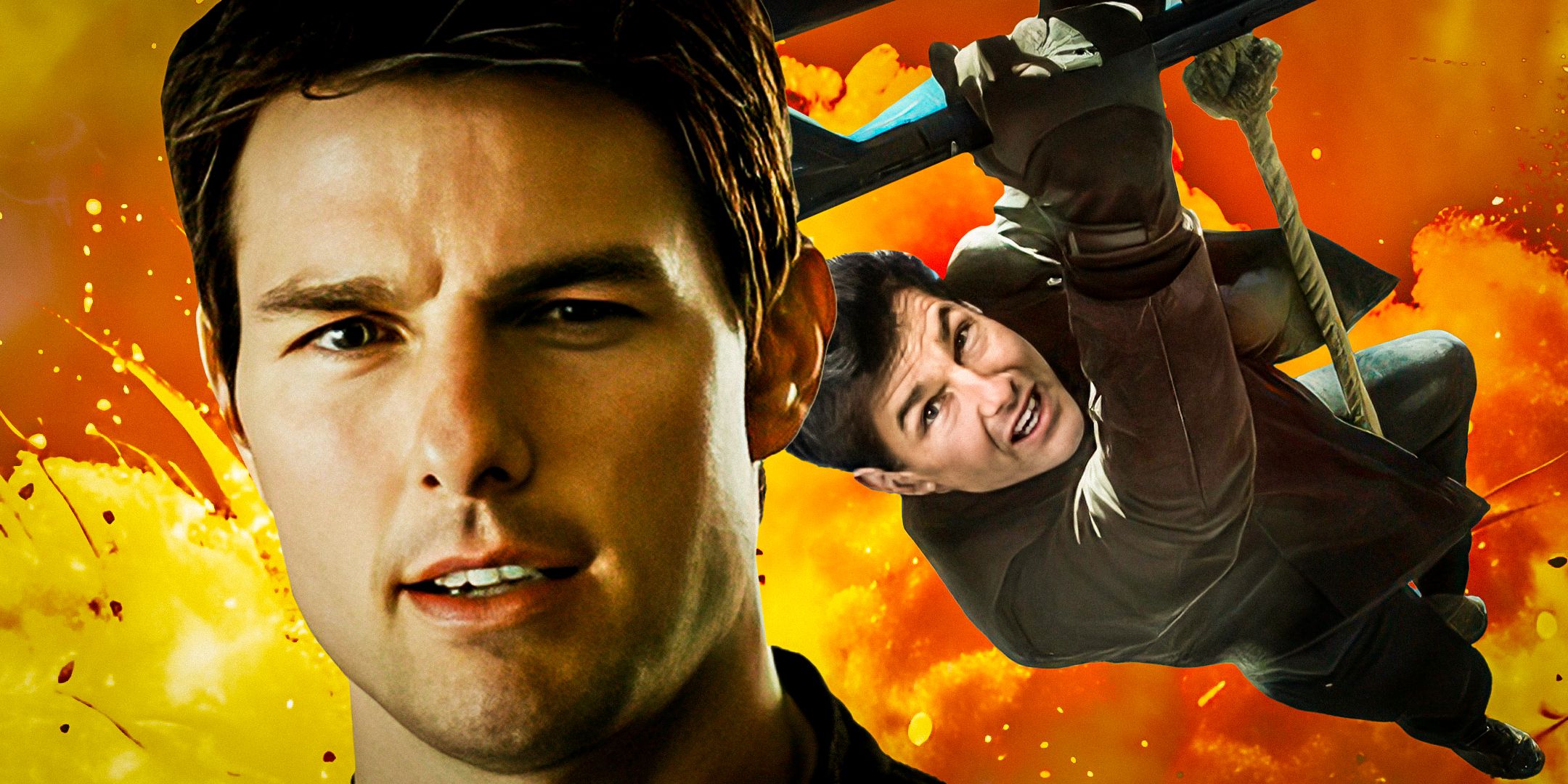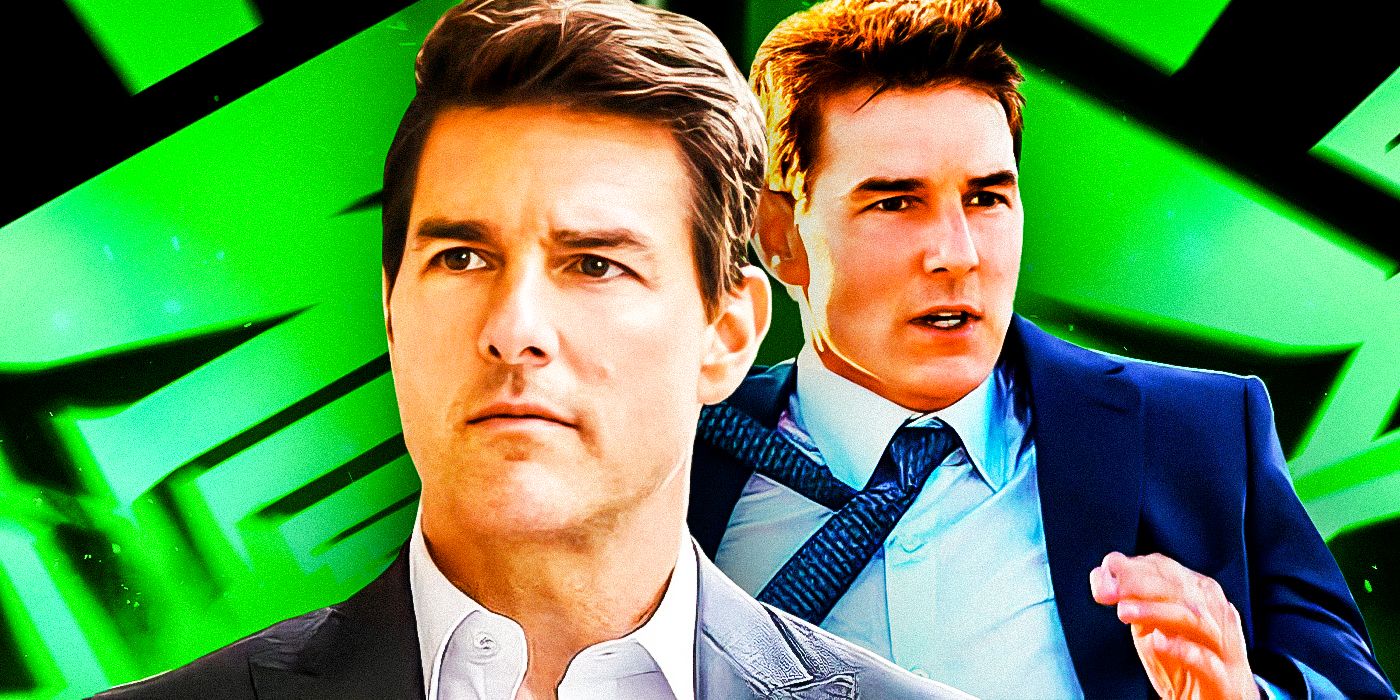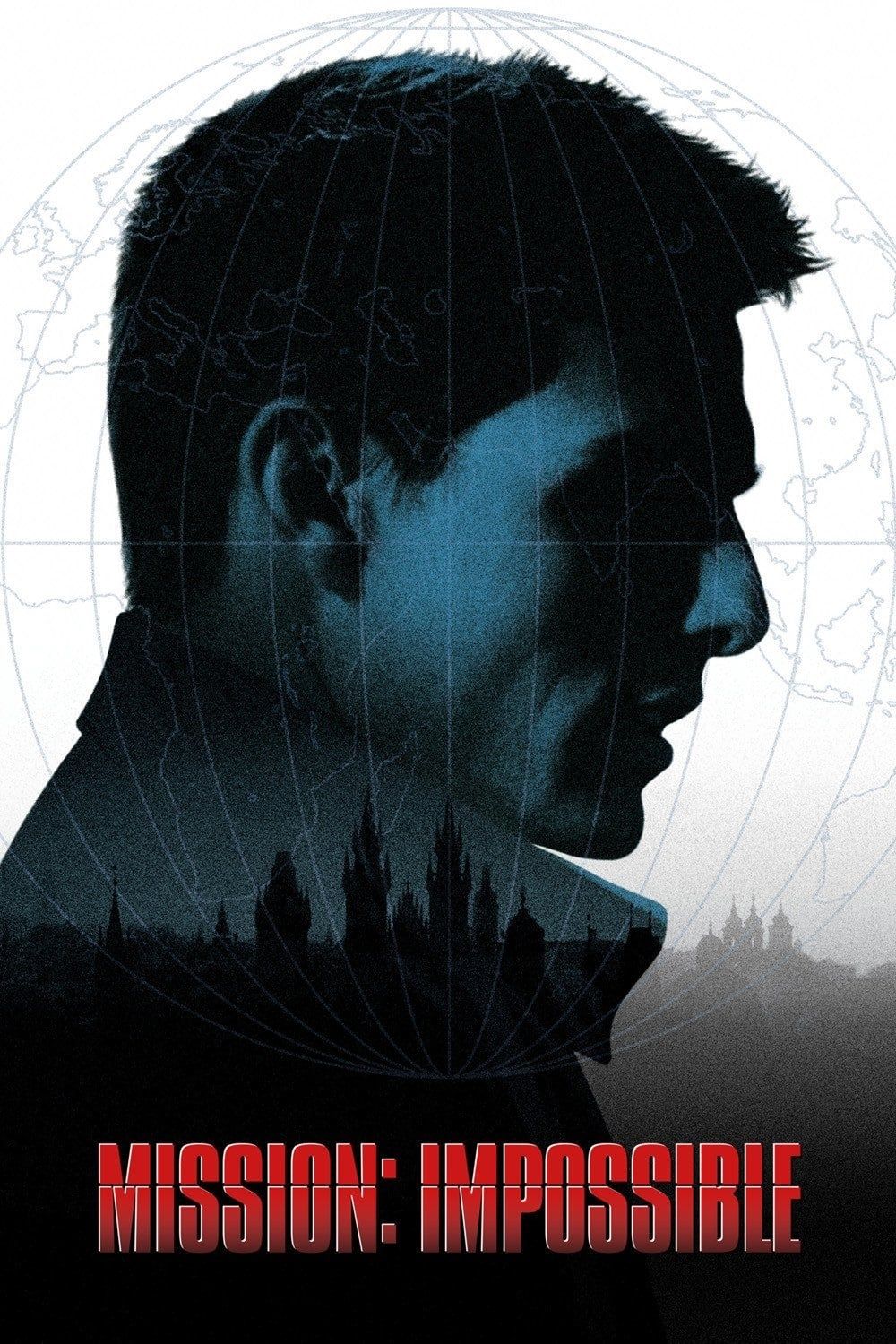Summary
- Mission: Impossible’s first movies get off to a rough start but steadily improve with each new entry, leading to better quality sequels.
- Brian De Palma’s directing style in the original film stands out, but subsequent films lack the same creative control and unique vision.
- Despite initial female protagonist portrayal issues, recent films have successfully addressed this by introducing more developed and interesting characters.
With the release of Mission: Impossible – Dead Reckoning One, Tom Cruise’s Mission: Impossible movie series is now up to seven entries, and here are 10 things I learned while watching all of the Mission: Impossible movies in order. Ahead of the release of the latest film, I decided to watch every Mission: Impossible movie for the first time, with this exciting action binge inducting me into the Mission: Impossible fandom. Waiting so long to watch these films has given me some interesting perspectives on the franchise, leading to me drawing these 10 conclusions about Mission: Impossible‘s seven-movie saga.
Despite being a fan of action, I waited a long time to catch up on Mission: Impossible, as I thought that the series was a bit too long for me. However, after hearing praise for Mission: Impossible – Fallout for years, I finally decided to dive in during the summer of 2023 in order to be caught up for the release of Mission: Impossible – Dead Reckoning Part One. I had an absolute blast watching through Tom Cruise’s crowning achievement of a franchise, and while there were some negative parts, I overall became a massive fan of the series.
Related
10 Harsh Realities Of Rewatching Tom Cruise’s First Mission: Impossible 28 Years Later
1996’s Mission: Impossible kickstarted one of the biggest franchises of all time, but the first movie is a little underwhelming in hindsight.
10 Mission: Impossible Gets Off To A Rough Start
The First Two Films Aren’t As Good As The Rest
While the legacy of Mission: Impossible is legendary now, the Tom Cruise movie series does get off to a rough start. The first Mission: Impossible movie is pretty cheesy, and while there is a lot to enjoy, it wasn’t the mind-blowing experience that some of the later Mission: Impossible films are. It relies too heavily on attempting to recreate many of the elements from the original TV show, and while Tom Cruise is great, it pales in comparison to the subsequent films.
Although it isn’t significantly worse, Mission: Impossible II is a small step down from the first one. While I overall enjoyed both films, the promise of better things to come is what made me stick it out, as I wasn’t eager to watch four more films if they were only as good as the first two. While the initial two Mission: Impossible films are still good, they are only a preview of the much better movies that start in the very next entry.
9 The Series’ Directing Is Never As Interesting As Brian De Palma’s Original
It Is The Best Part Of The First Movie
Before moving on to discuss the entries that I consider great, there is one aspect of the first Mission: Impossible that the subsequent films haven’t matched: Brian De Palma’s direction. I’m a huge Brian De Palma fan, and seeing his signature filmmaking style all over the first entry in a massive franchise was an interesting surprise that I wasn’t expecting.
Brian De Palma’s moody lighting, exaggerated camera angles, and loud dialogue are at the core of the DNA of the first one, and while this does make the original feel weird when compared to the later movies, it is undeniably interesting. While some great directors have worked on the later Mission: Impossible movies, it never felt as if they were given as much creative control as Brian De Palma was, with his directorial style being the most memorable part of the first film.

Related
All 7 Mission: Impossible Opening Credits Sequences, Ranked Worst To Best
The Mission: Impossible franchise starts every movie with a dynamic opening credits sequence to set the stage for another action adventure.
8 Almost Every Mission: Impossible Movie Is Better Than Its Predecessor
There Are Very Few Exceptions
While massive franchises almost always see a decrease in quality after a few entries, the Mission: Impossible movies do the opposite, as almost every entry is better than its predecessor. While the first two are around the same level, Mission: Impossible III is better than all of its predecessors, and the same can be said for Mission: Impossible – Ghost Protocol, Mission: Impossible – Rogue Nation, and Mission: Impossible – Fallout.
While I did like Mission: Impossible – Fallout slightly more than Mission: Impossible – Dead Reckoning Part One, they are so close that I could easily change my mind on a rewatch. While the second and seventh films are the only exceptions to this rule, the change in quality is so slight that the line of best fit for my enjoyment of the franchise has an incredibly positive slope.
But From Then On, It Is Incredible
While I have made my indifference to the first two Mission: Impossible movies known, I feel like Mission: Impossible III is where the franchise really found its footing. Mission: Impossible III was the turning point where the franchise made a lot of changes that remained throughout the later movies. Mission: Impossible III was more grounded than its predecessors, focused more on the stunts, and strayed away from the CGI-heavy scenes of the previous two films.
On top of that, Mission: Impossible III makes some big improvements with its characters. It attempts to humanize Ethan Hunt far more than the first two, something that is continued in the later films. On top of that, Mission: Impossible III introduces two of the franchise’s best recurring characters, Simon Pegg’s Benji and Michelle Monaghan’s Julia, as well as the series’ best human villain.
6 Philip Seymour Hoffman Plays Mission: Impossible’s Best Human Villain
No Other Villains Can Compare
The Mission: Impossible series has introduced a lot of villains for Ethan Hunt to go up against, but none of them are as good as Philip Seymour Hoffman’s Owen Davian from Mission: Impossible III. Owen Davian is a huge step up from the villains in the first two, and he remains undefeated when compared to the antagonists in the later films. While some would argue that Henry Cavill’s twist villain from Mission: Impossible – Fallout is the best, this isn’t revealed until the very end, whereas Hoffman’s arms dealer is a villain throughout.
The thing that makes Owen Davian such a great villain is Philip Seymour Hoffman’s legendary performance, with this being one of the many roles that has contributed to the actor’s incredible legacy. Hoffman manages to make Davian absolutely terrifying, with the sadistic manipulator acting as the perfect foe for Tom Cruise’s Ethan Hunt in the third film.

Related
I’m More Convinced Than Ever Who Mission: Impossible’s Perfect Tom Cruise Replacement Is
Tom Cruise won’t be Mission: Impossible’s lead forever, and I know exactly who can perfectly replace Ethan Hunt and carry the franchise forward.
5 Mission: Impossible Does Have A Female Protagonist Problem
But The Later Movies Fixed It
While Mission: Impossible – Fallout was the start of the franchise improving on this issue, the first five movies do have a female protagonist problem. Almost every Mission: Impossible movie has introduced a new female lead, but they almost never return in subsequent movies. This combined with them not being nearly as developed as Ethan Hunt has caused many of the franchise’s female leads to feel like an afterthought, with several seeming like nothing more than love interests for Ethan Hunt.
Luckily, the use of Rebecca Ferguson’s Ilsa, Vanessa Kirby’s Alanna, Haley Atwell’s Grace, and Pom Klementieff’s Paris has shown that Mission: Impossible is dedicated to addressing this issue, and it has done so successfully. These four characters from the recent films are just as interesting as any of the other Mission: Impossible leads, and hopefully some of them return in the next movie.
4 Mission: Impossible’s Mask Scenes Get Better As The Franchise Goes On
The Series Changes Their Purpose
The masks are one of the most iconic parts of Mission: Impossible, but this element only gets better as the franchise goes on. Due to the campy nature of the first two Mission: Impossible films, the mask reveals come off as a little goofy, although they are believable in the world that the films have set up. However, it quickly becomes apparent that most films will have a mask twist, leading to audiences coming to expect it.
I was more impressed by how the later Mission: Impossible movies changed course, instead using the masks to challenge their actors to give some incredible performances. Mission: Impossible III‘s scene in which Philip Seymour Hoffman plays Tom Cruise pretending to be Philip Seymour Hoffman and Mission: Impossible – Dead Reckoning Part One‘s scene in which Vanessa Kirby plays Haley Atwell pretending to be Vanessa Kirby are two of the most impressive scenes in the franchise, and they only work because of the mask gimmick.
3 Ethan, Luther, & Benji’s Relationship Is The Heart Of The Franchise
Nothing Can Beat This Trio
The Mission: Impossible series has had a lot of side characters throughout the movies, but the best dynamic that the series has found is between Ethan, Luther, and Benji. The friendship between this trio of spies is the heart of the franchise, with it grounding each character throughout. Luther and Benji’s relationship with Ethan shows that Ethan is an actual human with relationships, making him seem far more real than his death-defying Mission: Impossible stunts would otherwise suggest.
Ethan Hunt does work with other team members throughout the series, but none of these other spy dynamics work nearly as well as this trio. The Mission: Impossible series clearly knows it, as since Benji was introduced in the third film, this trio has been the primary focus, with them even working together again in Mission: Impossible – Dead Reckoning Part One. The addition of Jeremy Renner, Alec Baldwin, and Henry Cavill do work, but never as well as Tom Cruise, Ving Rhames, and Simon Pegg.

Related
10 Biggest Details & Reveals From Mission: Impossible 8’s Set Photos & Videos
The various forms of behind the scenes content for Mission: Impossible 8 has already provided some major clues for the highly anticipated sequel.
2 Dead Reckoning’s AI Story Is The Franchise’s Most Interesting
It Is A Fantastic Change Of Pace
Mission: Impossible – Dead Reckoning Part One took a big risk by centering its story around something far different from anything that it had covered before: AI. However, this paid off masterfully, as not only is the film’s Entity villain topical, but it actually requires the Mission: Impossible gang to fight a foe that can’t be beaten with punches or bullets.
The Mission: Impossible series is full of interchangeable villains who want money, weapons, and power, but a seemingly omniscient AI who has no human goals is a terrifying change of pace. The Entity is a villain worthy of the first two-part Mission: Impossible saga, and I can’t wait to see it return in the next film.
1 Mission: Impossible Wouldn’t Work Without Tom Cruise
He Can’t Be Replaced
With Tom Cruise having starred as Ethan Hunt for decades now, there has been a lot of speculation surrounding how Mission: Impossible can exist without Tom Cruise. After watching every Mission: Impossible movie, however, I have come to the conclusion that it can’t.
Tom Cruise’s performance as Ethan Hunt is the main draw of the franchise, and it will be near-impossible to find an actor who is as cool, talented, and willing to perform all of Mission: Impossible‘s dangerous stunts. When Tom Cruise decides that he wants to leave Mission: Impossible, it is time to put the franchise to rest, as carrying it on would only make it a pale imitation of its glory days.






